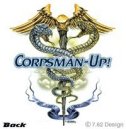Feeding Rats Activated Charcoal Gives 43%...
 niner
17 Aug 2012
niner
17 Aug 2012
What about single amino acids? If I want to take some taurine or glycine before bed with activated charcoal, does that get absorbed?
Somewhere there must be some published data on the rates at which different molecules are absorbed by AC. I would assume, in the absence of actual knowledge, that it would absorb most anything that it was in intimate contact with (although there must be some stuff that doesn't stick). My plan is going to be to take it a few hours away from supplements and drugs that I don't want to see absorbed. One problem I see is sustained release formulations- like I take a slow release niacin. Would AC suck it up? I'm hoping that if it's a few feet farther down my intestine, I'd be in the clear, but the powdered charcoal would probably get pretty mixed up in the gut from peristaltic motions. This might be an argument for a more granular product? Lots of unknowns.
 david ellis
18 Aug 2012
david ellis
18 Aug 2012
Does it have to be water? I would like to try coconut oil. Is there any reason not to?I received the "Charcoal House" powder I linked to in post #49 above, and it is very similar to bentonite and zeolite powers in that you want to let it settle before you (carefully) spoon it out. I mixed it up with all the other powders I take and it turned the water an unattractive black, but didn't do anything to the taste.
 tintinet
19 Aug 2012
tintinet
19 Aug 2012
Does it have to be water? I would like to try coconut oil. Is there any reason not to?I received the "Charcoal House" powder I linked to in post #49 above, and it is very similar to bentonite and zeolite powers in that you want to let it settle before you (carefully) spoon it out. I mixed it up with all the other powders I take and it turned the water an unattractive black, but didn't do anything to the taste.
Perhaps just the amount of coconut oil one might have to ingest to get 'enough' charcoal.
 niner
19 Aug 2012
niner
19 Aug 2012
Does it have to be water? I would like to try coconut oil. Is there any reason not to?
Yes, there is a reason not to use coconut oil. It would tend to "clog the pores" of the charcoal. I don't know the exact mechanism, but activated charcoal is not supposed to be used with fatty foods like ice cream. It's been looked at. People are always looking for ways to get kids to take it without having a fit. Apparently "not dying" isn't sufficient motivation for a seven year old...
 rwac
19 Aug 2012
rwac
19 Aug 2012
I don't know the exact mechanism, but activated charcoal is not supposed to be used with fatty foods like ice cream. It's been looked at.
I think bile might be involved too. Fatty foods would trigger bile release which perhaps further absorbs on the activated charcoal, reducing it's efficacy further.
 niner
19 Aug 2012
niner
19 Aug 2012
I don't know the exact mechanism, but activated charcoal is not supposed to be used with fatty foods like ice cream. It's been looked at.
I think bile might be involved too. Fatty foods would trigger bile release which perhaps further absorbs on the activated charcoal, reducing it's efficacy further.
Good point. AC does adsorb bile acids:
Lipids. 1980 May;15(5):365-70.
The adsorption of bile salts on activated carbon.
Krasopoulos JC, De Bari VA, Needle MA.
Activated carbon (AC) has been shown to be effective in reducing serum cholesterol and triglycerides. The mechanism for this action is proposed to be a result of the removal of bile salts in the gut. In this paper, the adsorption of cholate, glycocholate, taurocholate, chenodeoxycholate and deoxycholate on AC is studied in vitro. The results indicate that AC has a high capacity for bile salts, completely removing them from solutions of up to 5 mM and at a rate consistent with physiological activity. Of the 2 types of AC tested, one was shown to exhibit greater capacity and selectivity over the other. A negligible effect was seen with variation of pH through the range 7-9. Desorption occurs in the presence of bile salt-free buffer, but to a minimal extent. Based on these data, the adsorption of bile salts by AC appears to be a likely mechanism for AC-induced reduction of serum lipids.
PMID: 7392829
AC has a pretty substantial cholesterol-lowering effect. Is that part of the magic?
 Logan
19 Aug 2012
Logan
19 Aug 2012
 Turnbuckle
19 Aug 2012
Turnbuckle
19 Aug 2012
Lipids. 1980 May;15(5):365-70.
The adsorption of bile salts on activated carbon.
Krasopoulos JC, De Bari VA, Needle MA.
Activated carbon (AC) has been shown to be effective in reducing serum cholesterol and triglycerides. The mechanism for this action is proposed to be a result of the removal of bile salts in the gut. In this paper, the adsorption of cholate, glycocholate, taurocholate, chenodeoxycholate and deoxycholate on AC is studied in vitro. The results indicate that AC has a high capacity for bile salts, completely removing them from solutions of up to 5 mM and at a rate consistent with physiological activity. Of the 2 types of AC tested, one was shown to exhibit greater capacity and selectivity over the other. A negligible effect was seen with variation of pH through the range 7-9. Desorption occurs in the presence of bile salt-free buffer, but to a minimal extent. Based on these data, the adsorption of bile salts by AC appears to be a likely mechanism for AC-induced reduction of serum lipids.
PMID: 7392829
AC has a pretty substantial cholesterol-lowering effect. Is that part of the magic?
Thanks, niner. This will save me big bucks on Welchol!
I like Welchol because by sequestering bile it ramps up my cholesterol production to compensate, and in doing that it also ramps up my coQ10 production since they are on the same metabolic pathway--the opposite of statins. When I first began taking it over a year ago I felt better and had more energy. I also had a better tolerance to sugar, which can't be explained by simply more coQ10, so there must be something else on the metabolic pathway. And now I'm wondering if sequestering bile isn't the main factor in the enhanced longevity with AC in rats, more so than removal of toxins.
Though if it is, it's not just from the coQ10 aspect--
Effect of coenzyme Q10 intake on endogenous coenzyme Q content, mitochondrial electron transport chain, antioxidative defenses, and life span of mice
...Life span studies, conducted on 50 mice in each group, showed that CoQ10 administration had no effect on mortality. Altogether, the results indicated that contrary to the historical view, supplemental intake of CoQ10 elevates the endogenous content of both CoQ9 and CoQ10, but has no discernable effect on the main antioxidant defenses or prooxidant generation in most tissues, and has no impact on the life span of mice.
Edited by Turnbuckle, 19 August 2012 - 11:51 AM.
 cbohrson
20 Aug 2012
cbohrson
20 Aug 2012
Thanks for all the info thus far. Is AC contraindicated at all? I.e. do we have any evidence that it potentially could have negative effects?
Furthermore, are we sure there isn't an inadvertent CR effect here in the life extension studies? This is going to be scientifically wishy-washy, but couldn't activated charcoal plausibly sequester molecules like amino acids and glucose and thus decrease the total number of absorbed Calories?
Also, if activated charcoal remains in the digestive tract, how could it have a significant effect on the excretions of senescent cells in the body? Are the majority of the body's senescent cells located in the GI tract? Is there some reason to expect a significant number of senescent cells' toxic metabolites to end up in the GI tract?
 niner
20 Aug 2012
niner
20 Aug 2012
In the primary study, one group of 28-month-old rats was given charcoal in their diets for 10 days, followed by no charcoal for one month. This cycle was repeated until each animal died. Charcoal increased the mean lifespans at 50% mortality from 937 to 977 days, at 80% mortality from 972 to 1023 days, and at 100% mortality from 993 to 1055 days. The mean increases in the lifespans wee 47.3, 41.4, and 43.7%, respectively.
I would call these increases of 4.3%, 5.2%, and 6.2%, respectively. Apparently they are basing their percent increase on the relatively small amount of remaining life after 28 months. Is this some sort of gerontological "standard of the industry"? IMHO, it borders on a fraudulent claim, and strikes me as a scientifically meaningless approach. If you wait until the controls are ready to drop dead, then give the treatment group something that keeps them alive for a few days longer, have you increase "lifespan" by 300%? I don't think so.
I feel like an idiot for having fallen for this seemingly extraordinary claim without looking at the original paper. Live and learn, eh?
To those of us who want to continue to pursue AC, and I do still think it has merit, Cooney also relays this information from the original work, which is rather critically important:
In one group that was fed charcoal in cycles of one month of charcoal plus 10 days of no charcoal, the lifespan increases were much lower than those noted above; hence, there appears to be an optimal schedule of feeding the charcoal.
So it looks like it should be cycled, with more off-time than on-time.
 cbohrson
20 Aug 2012
cbohrson
20 Aug 2012
IIRC people are excited about rapamyacin based on results similar to those obtained in this study. A smaller increase in absolute lifespan was observed -- something on the order of ~10% -- but more like 30% or 40% extension WRT remaining lifespan from the start of the drug's administration.
 Turnbuckle
20 Aug 2012
Turnbuckle
20 Aug 2012
I feel like an idiot for having fallen for this seemingly extraordinary claim without looking at the original paper. Live and learn, eh?
Yet this is still not the original paper. Nevertheless, if there was marketing-type fraud here, my suspicion is that Clooney left off the explanation of what those percentages meant because it fit in better with the theme of his book.
 shermhead
20 Aug 2012
shermhead
20 Aug 2012
Sent from my SAMSUNG-SGH-I747 using Tapatalk 2
 niner
20 Aug 2012
niner
20 Aug 2012
Nevertheless, if there was marketing-type fraud here, my suspicion is that Clooney left off the explanation of what those percentages meant because it fit in better with the theme of his book.
If Cooney was really engaging in marketing fraud, I don't think he would have included the raw data. Cooney's book is an academic tome that costs $160, last published 17 years ago. I don't think he's engaging in fraud there; it looks pretty straight up to me. The AC "alternative medicine" crowd is where you're likely to find most of the BS.
 Turnbuckle
20 Aug 2012
Turnbuckle
20 Aug 2012
Nevertheless, if there was marketing-type fraud here, my suspicion is that Clooney left off the explanation of what those percentages meant because it fit in better with the theme of his book.
If Cooney was really engaging in marketing fraud, I don't think he would have included the raw data. Cooney's book is an academic tome that costs $160, last published 17 years ago. I don't think he's engaging in fraud there; it looks pretty straight up to me. The AC "alternative medicine" crowd is where you're likely to find most of the BS.
I doubt that the price on the book has much to do with its reliability. And when he later says that "reports from Russia have shown a striking prolongation of lifespan in rats fed a steady diet of charcoal," he is making not just one but two errors, because it wasn't dramatic and the diet of charcoal wasn't steady. In Chapter 21 he confesses to not reading the Russian papers but depending mostly on English abstracts of them from Med-Line. So who knows what the real story is.
 treonsverdery
20 Aug 2012
treonsverdery
20 Aug 2012
 Turnbuckle
20 Aug 2012
Turnbuckle
20 Aug 2012
I strongly think they should put activated carbon at petfoods, those numbers from a wide variety of study sources could be of authentic scientific benefit. It is cheaper than protein as well.
You don't think black food would be a problem?
 niner
21 Aug 2012
niner
21 Aug 2012
I doubt that the price on the book has much to do with its reliability. And when he later says that "reports from Russia have shown a striking prolongation of lifespan in rats fed a steady diet of charcoal," he is making not just one but two errors, because it wasn't dramatic and the diet of charcoal wasn't steady. In Chapter 21 he confesses to not reading the Russian papers but depending mostly on English abstracts of them from Med-Line. So who knows what the real story is.
It's not that the price indicates reliability, it's that it's a large academic work. The guy isn't selling anything, and I think that accusing him of fraud is just paranoia. Cooney got the data from somewhere, not to mention some other very useful information. At this point, I trust him at least as much as the Russians. More, in fact, since when he was doing his work, he had a stable job in a stable first world country, while when the Russian work was being done, the USSR was in freefall.
 Turnbuckle
21 Aug 2012
Turnbuckle
21 Aug 2012
I doubt that the price on the book has much to do with its reliability. And when he later says that "reports from Russia have shown a striking prolongation of lifespan in rats fed a steady diet of charcoal," he is making not just one but two errors, because it wasn't dramatic and the diet of charcoal wasn't steady. In Chapter 21 he confesses to not reading the Russian papers but depending mostly on English abstracts of them from Med-Line. So who knows what the real story is.
It's not that the price indicates reliability, it's that it's a large academic work. The guy isn't selling anything, and I think that accusing him of fraud is just paranoia. Cooney got the data from somewhere, not to mention some other very useful information. At this point, I trust him at least as much as the Russians. More, in fact, since when he was doing his work, he had a stable job in a stable first world country, while when the Russian work was being done, the USSR was in freefall.
Not so much fraud as the natural tendency to bend everything to fit a message. And when I read more of the book I began to think he was quite sloppy as well. As for that first world business and the USSR being in free-fall, that is irrelevant.
 niner
21 Aug 2012
niner
21 Aug 2012
Not so much fraud as the natural tendency to bend everything to fit a message. And when I read more of the book I began to think he was quite sloppy as well. As for that first world business and the USSR being in free-fall, that is irrelevant.
I think you're being pretty hard on him, considering how hard it is to find a lot of the information in that book. If you were a Russian scientist in 1989, I don't think you would consider the upheaval to be irrelevant at all. Scientists have to eat. The need to seem relevant at whatever cost may have been a big motivator for Russian academics in that period.
 treonsverdery
21 Aug 2012
treonsverdery
21 Aug 2012
the thing is to honestly replicate the studies.
 Turnbuckle
21 Aug 2012
Turnbuckle
21 Aug 2012
Not so much fraud as the natural tendency to bend everything to fit a message. And when I read more of the book I began to think he was quite sloppy as well. As for that first world business and the USSR being in free-fall, that is irrelevant.
I think you're being pretty hard on him, considering how hard it is to find a lot of the information in that book. If you were a Russian scientist in 1989, I don't think you would consider the upheaval to be irrelevant at all. Scientists have to eat. The need to seem relevant at whatever cost may have been a big motivator for Russian academics in that period.
While that is possible*, why didn't Cooney catch it if it was so obvious, first world academic that he was? And it was obvious. If he typed it in, he should have been slapping his forehead at how ridiculous it was.
*I know of one case where an African researcher has obviously been making up all his experimental data and extracting big bucks from nutritional companies in the US, who all seem afraid to admit they've been hoodwinked so they keep on selling products that are worthless.
 Turnbuckle
21 Aug 2012
Turnbuckle
21 Aug 2012
actually I think a coated petfood would look pretty normal, what if there is an unexpected benefit like less odor at the litterbox or fresh breath?
the thing is to honestly replicate the studies.
Carbon black is a very strong colorant. If you mix it with anything it will become black. You might try to isolate the black to nuggets, but imagine what would happen if one of those got away from the bowl and dropped on the carpet and got stepped on. (And the doggie droppings would also be a dense black.) A quick market failure will result. Better to use zeolite or bentonite.
Edited by Turnbuckle, 21 August 2012 - 01:38 AM.
 Climactic
21 Aug 2012
Climactic
21 Aug 2012
The surface can be colored with another color, so only the insides remain a shade of black.Carbon black is a very strong colorant. If you mix it with anything it will become black. You might try to isolate the black to nuggets, but imagine what would happen if one of those got away from the bowl and dropped on the carpet and got stepped on. (And the doggie droppings would also be a dense black.) A quick market failure will result. Better to use zeolite or bentonite.
Zeolite and bentonite are not the same at all.
 Logic
21 Aug 2012
Logic
21 Aug 2012
So
Vitamins: A to Z.
Minerals: Need a list of them.
Supps: Resveratrol, Astragalus, Aswaganda, Bacopa, Purslane, ????
This is the only way I can think of to come up with an idea of how to take AC. Any other Ideas?
Edited by Logic, 21 August 2012 - 02:36 PM.
 Turnbuckle
21 Aug 2012
Turnbuckle
21 Aug 2012
The surface can be colored with another color, so only the insides remain a shade of black.Carbon black is a very strong colorant. If you mix it with anything it will become black. You might try to isolate the black to nuggets, but imagine what would happen if one of those got away from the bowl and dropped on the carpet and got stepped on. (And the doggie droppings would also be a dense black.) A quick market failure will result. Better to use zeolite or bentonite.
Zeolite and bentonite are not the same at all.
They are all enterosorbents.
 nowayout
21 Aug 2012
nowayout
21 Aug 2012
 Climactic
21 Aug 2012
Climactic
21 Aug 2012
Note, by the way, that AC can later release previously absorbed substances. I imagine this happens with some probability. Some of these released nutrients may then be absorbed by the body after all - others may not. In any case, this is why, in professional use, it makes sense to follow up after AC with a cathartic.Wouldn't the simplest explanation be that AC reduces absorption of nutrients, causing the rats to effectively be on CR? It is not news that CR extends lifespan.
CR is a rather extreme diet. It is not clear at all that sufficient AC was consumed on a regular basis to lead to significant CR. The theory of dietary AGE adsorption by AC seems more relevant, at least in humans.
Edited by Climactic, 21 August 2012 - 04:37 PM.
 niner
21 Aug 2012
niner
21 Aug 2012
Wouldn't the simplest explanation be that AC reduces absorption of nutrients, causing the rats to effectively be on CR? It is not news that CR extends lifespan.
Animals on AC have shown normal rates of growth, or even supra-normal growth characteristics, so I doubt that crypto-CR is the MOA.
 treonsverdery
21 Aug 2012
treonsverdery
21 Aug 2012
one approach to activated carbon longevity is to think of it as an enteroansorbent, when people make activated carbon they soak it with CaCl or ZnCl then warm it up to create ultramicrocrystals which possibly modify the shape of the carbon surface, to create vast surface area, then they rinse out the ions.
I think that minimally digestible polystarches (high number polymer starches) like nondigested versions of modified food starch, would quite possibly respond with surface area increase if they were also ion crystallized then rinsed. Further, chitosan, made of chitin, is also a food additive. chitosan is a polymer as well, so its possible crystallizing ions then rinsing chitosan would create hyper surface area FDA approved enteroabsobant polymer
Both hemipolystarch as well as chitosan are white so they could be created then tested as to longevity effects.
Chitosan is already considered a diet supplement, creates artificial fullness while absorbing lipids, a hypersurface area version, if it actually was also longevizing would be body mass beneficial (reducing heart disease) as well as doing the longevety effect


